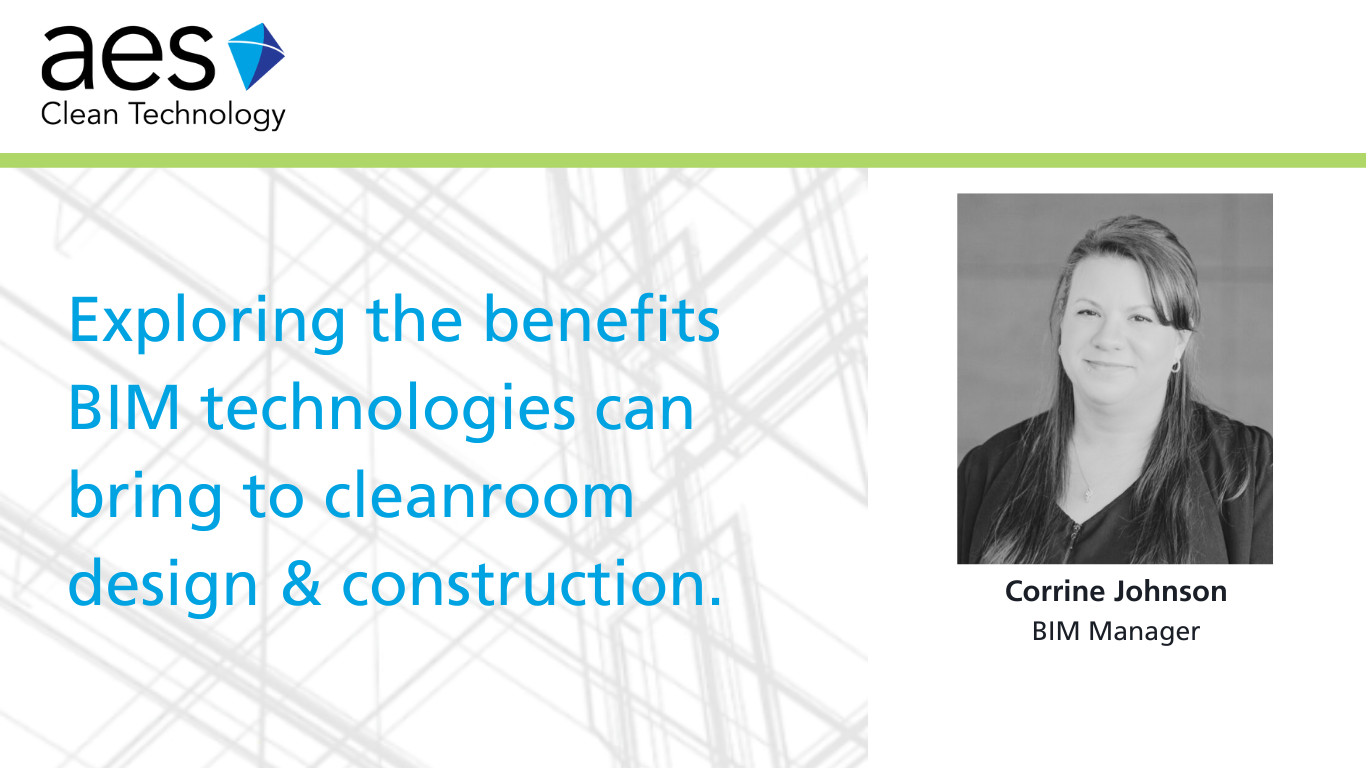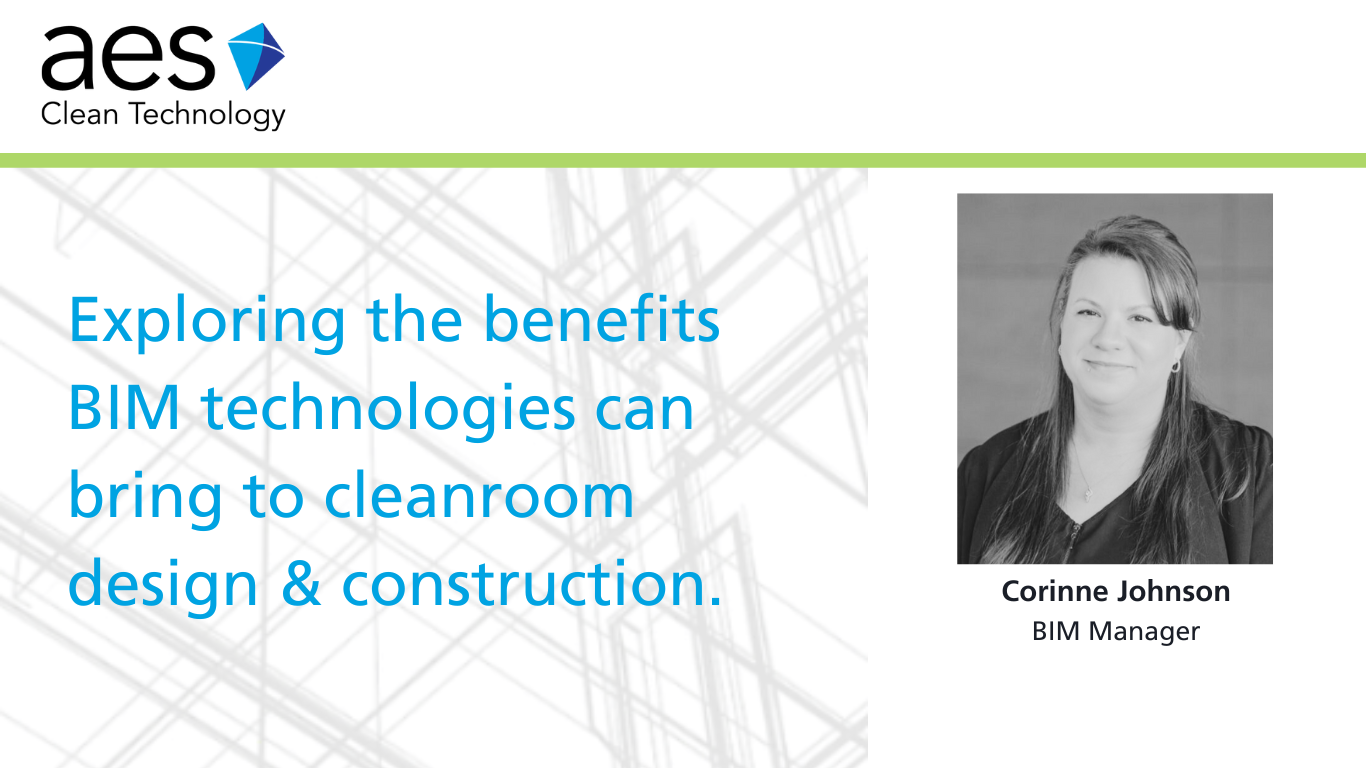
Representing an integral component of drug development and manufacturing, cleanrooms must be carefully designed and constructed to meet unique project needs. This is no simple task. As well as the highly specific needs pharma and biopharma cleanrooms must deliver — including ventilation, plumbing, fire protection and electrical wiring — cleanrooms must also be designed to fit within a defined and often limited space. All teams involved, from design to construction and beyond, must work together to overcome the intricacies involved and prevent any risks that could cause delays and financial losses further down the line.
Appreciating the challenges involved, cleanroom companies now increasingly rely on building information modeling (BIM) technologies to fine-tune designs in a unified 3D model and streamline and improve communication to prevent unforeseen issues.
Providing an answer to disjointed coordination
In the past, construction projects relied heavily on 2D paper drawings to visualize the desired building or infrastructure. These 2D drawings would be used extensively as a reference tool by engineers and builders throughout the project. To develop these plans and ensure alignment between all involved, architects, engineers, contractors and facility managers would have to share information effectively.
However, the difficulty involved in ensuring up-to-date information is distributed to all teams can leave the door open to error, with teams potentially “building blindly.” Without effective collaboration and communication, teams can quickly run into conflicts or unknowingly make poor decisions, ultimately delaying scheduling and subsequently impacting cost.
In tandem with utilizing 2D drawings, 3D digital models are now used in many industries — including cleanroom design and construction — to overcome these challenges. By utilizing BIM platforms such as Autodesk Revit and Autodesk Construction Cloud, cleanroom manufacturers can produce detailed 3D digital models integrating precise data about each component of the building or infrastructure. For the model to be an accurate representation of the project, all material suppliers should be able to provide a comprehensive set of data about their product in a single compatible design file that can be fed into the overarching model.
The precise 3D models produced using architectural, structural, mechanical and electrical data enable a better understanding of how each component in the space interacts. BIM models can also extrapolate the data incorporated to provide information on the real-world performance of the space, such as information on the most efficient timeline for construction to maintenance programs once the space is complete.
Exploring the advantages of BIM
BIM technologies can provide many advantages throughout all stages of a cleanroom’s life cycle and can help simplify the construction challenges of building in a small, defined space.
- Eliminating error
In construction, any errors — including wrong measurements — will have a domino effect, impacting all trades involved and potentially leading to costly fixes and delaying schedules significantly. BIM technologies can prevent errors that can be associated with relying solely on 2D drawings, specifications and reports while providing tools such as clash detection to identify clashes between different building elements.
- Streamlining scheduling
BIM technologies can be used throughout the entire cleanroom life cycle to help ensure the overall health, well-being and efficiency of the project while streamlining project scheduling. Leveraging the rich data informing the 3D model, BIM technologies can identify the most efficient and effective schedule for the installation of each component. BIM can also indicate lead times on orders of each component, helping to minimize supply chain delays by enabling the rapid identification of the best possible parts delivery schedule.
- Improving communication and coordination
By centralizing information to a BIM model, risks can be avoided by enhancing communication between teams and reducing errors. BIM can integrate different types of data relating to the cleanroom project, effectively providing all teams involved with up-to-date information in one place. Collaboration between architectural and engineering teams enables them to work simultaneously on a project and expedite delivery.
As well as promoting collaboration between stakeholders, BIM helps to protect data and prevent security issues that can be associated with alternative data-sharing platforms.
Progressing cleanroom design and construction with BIM
Despite the advantages BIM technologies can offer, up to this point, the adoption has been slow. Getting buy-in from all teams involved in construction can be tricky, with veteran builders and contractors preferring to stick to well-established processes over tackling the learning curve of navigating BIM models. Upfront costs, including setting up servers, databases, workflows and practices have also resulted in some resistance to incorporating BIM technologies into design and construction processes.
Although change has been slow, the adoption of BIM in the cleanroom construction industry has steadily increased. As time goes on, the capabilities of BIM technologies can be expected to grow, allowing engineers, contractors and architects to use them in new innovative ways. Technologies like laser scanners can be used to precisely digitally capture a site and create a more accurate BIM model using the data, further preventing human error.
The value of a cleanroom partner leveraging cutting-edge technologies
By enabling all teams involved in the design and construction of cleanrooms to work on a single project concurrently from anywhere in the world, BIM technologies represent a critical tool in enhancing collaboration and reducing risk. As the cleanroom industry begins to appreciate the benefits of BIM and technological advances expand its uses, relying on a cleanroom partner that utilizes these innovative platforms will become increasingly critical to streamlining projects.
In today’s landscape, the absence of technology can adversely affect project outcomes, leading to project delays and costs. At AES, we deploy a variety of tech platforms as part of our Technology Stack to manage your project effectively during each phase.
Contact us today to learn more about how AES can leverage BIM technologies to help streamline your cleanroom design, manufacturing and construction.

